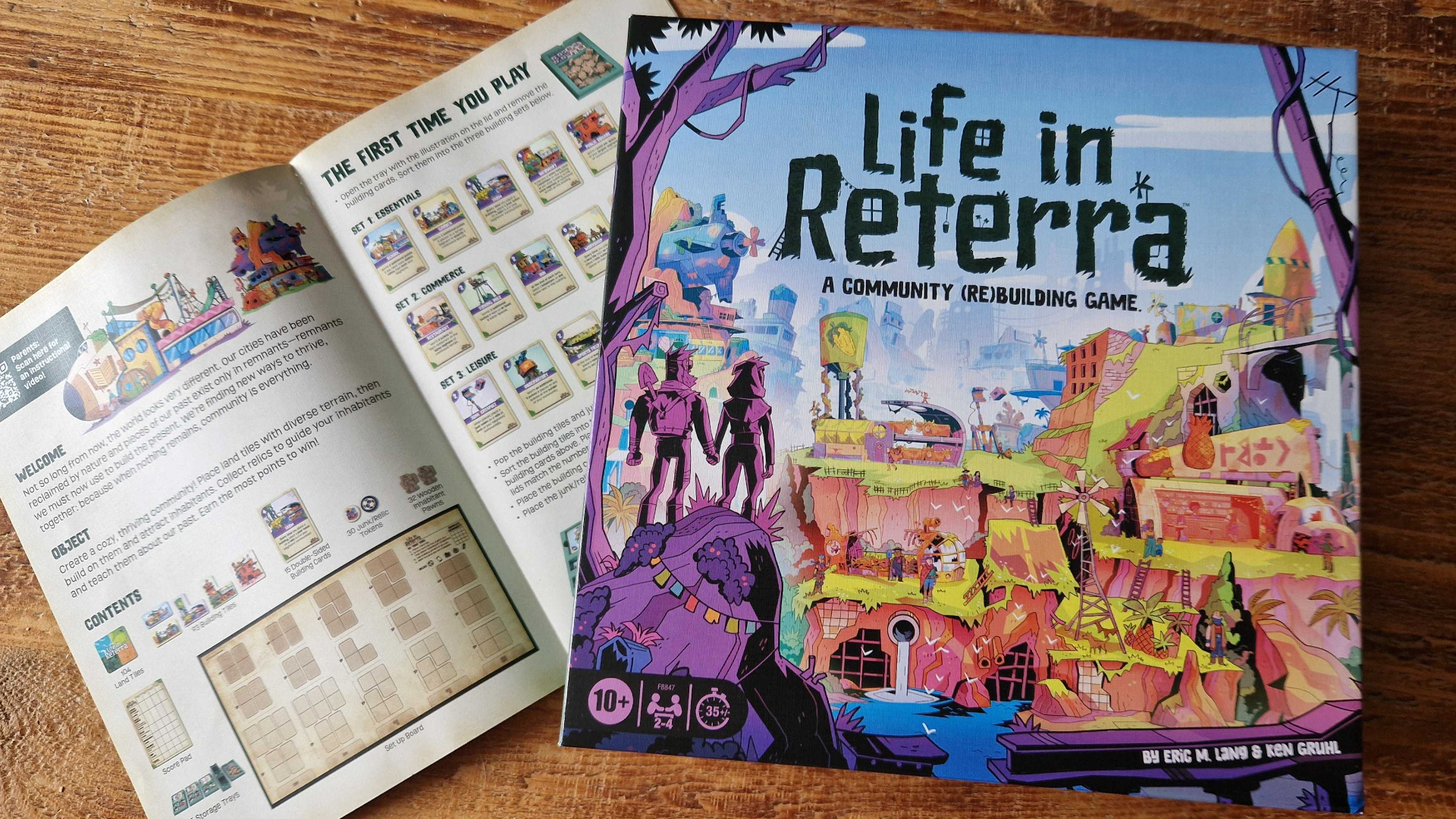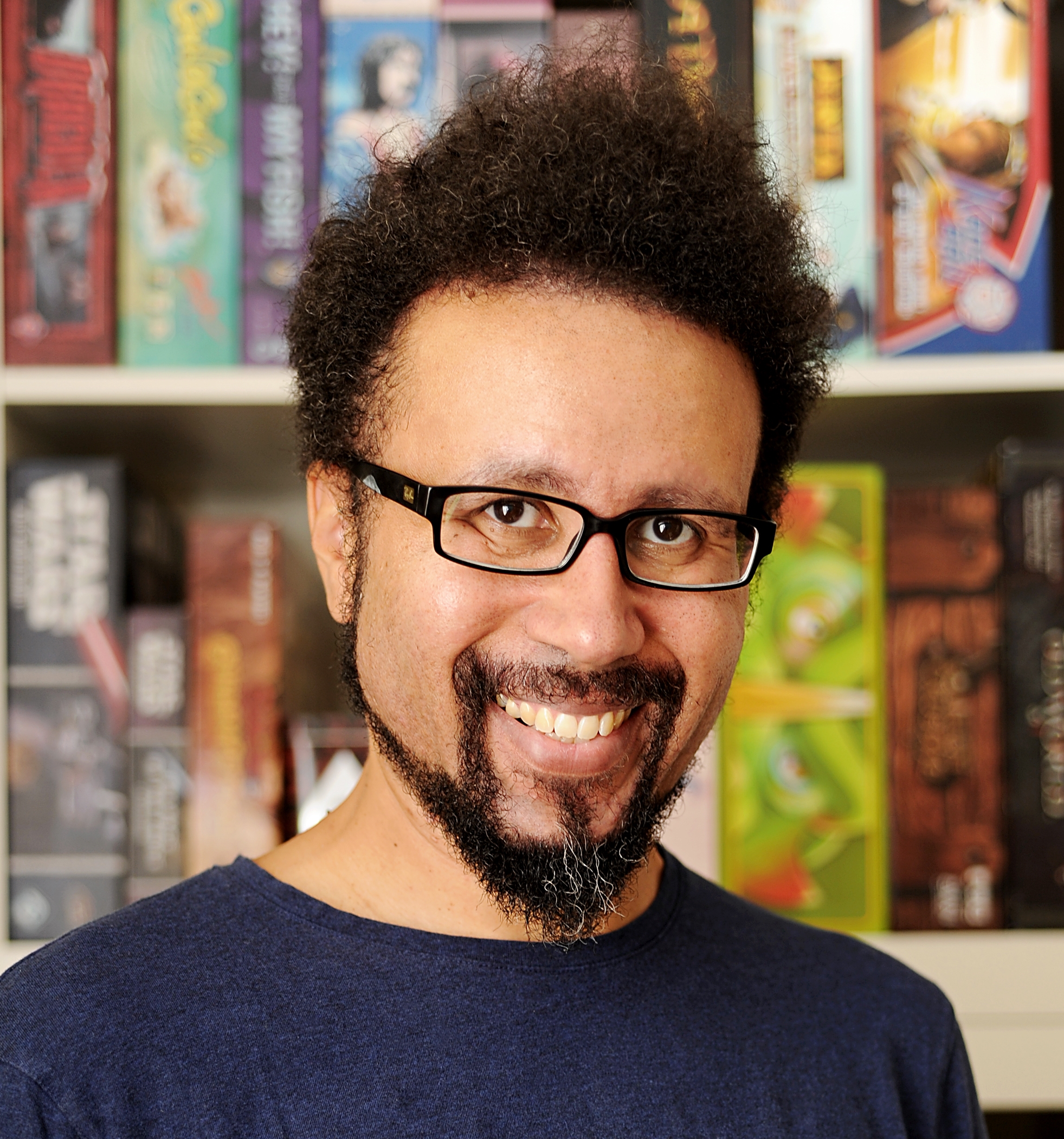How one of the most prolific board game designers made it: "The idea of mass market 'being simple' is bullshit"
"Games can be so much more. They can be bigger than the box – they're a lifestyle"

Eric M. Lang has basically seen it all when it comes to board game design. With literal decades of experience and countless projects under his belt, the Canadian defines 'prolific.' In fact, he's created so many different systems that it can be hard to keep track of what he's worked on.
There's one thing he still vehement about after all these years, though – that the best board games don't get that way by being dumbed down.
"I've always had this sort of ambition to recreate that [Dungeons & Dragons] moment, when I first played D&D," Lang tells me when we catch up at 2024's UK Games Expo. "It changed my life. It gave me the idea of 'oh my God, games can be so much more.' They can be bigger than the box – they're a lifestyle."
Lang thinks he may finally have cracked that ambition… and with a game he always thought was impossible.
"What do you got?"

If Lang had an origin story, it'd start with what he describes as "bad" games. At five or six, he used to play mass-market board games with his grandmother in Germany, and even though he loved spending time with her, he couldn't say the same about the games themselves. So naturally, he tried to fix them.
"I'd modify them," Lang tells me. "And I just caught the bug already back then. I would modify school games for recess and then I would design sports for middle school, and discovered D&D. I designed, like, 20 roleplaying games [as a child]. I discovered Magic: The Gathering, and that changed my life. [I decided] I wanted to be a game designer right then. And so I designed 15 or 16 collectible card games based on like, every roleplaying game I've ever done, every IP that I knew. So I basically got all my bad stuff out of the way!"
Fast-forward a few years and Lang was creating card games for Fantasy Flight, an outfit behind some of the top board games for adults. The moral of the story? Keep busy, clearly. But also, don't close doors. Lang eventually left to make video games after an "amazing" decade "essentially as [Fantasy Flight's] one-man collectible card game department," yet he always kept up his relationship with those colleagues. This helped him come back for an encore which saw him work on some of the world's biggest franchises – including Star Wars and Warhammer. From there, he went to CMON and started making "big box games beyond my wildest dreams."
Sign up to the GamesRadar+ Newsletter
Weekly digests, tales from the communities you love, and more

Lang has created over 100 board and card games in the past two decades. His first published title was Mystick: Domination in 2000, and since then, his credits have included the Game of Thrones A Song of Ice and Fire miniatures game, Star Wars: The Card Game, Marvel Unlimited, Warhammer: Invasion, the XCOM board game, Cthulhu: Death May Die, and Bloodborne: The Card Game. He is the recipient of the Diana Jones Award for Excellence in Gaming (2016), two Dice Tower Awards, and five Origins Awards. You can find him on Twitter @eric_lang.
However, there was still something Lang hadn't tackled yet – something that niggled at him.
"I needed to get back to my roots a little bit," he says. "I didn't want to overstay my welcome and design a bunch of big box games just because I could. I felt like the last game in my trilogy, that was a good stopping point for now. I was like, I'm not going to do better than this, at least now. So then I was excited to reconnect with my roots, all the games I grew up with. Scattergories – perfection. Balderdash. I still love those games. So I decided to sort of detox a little bit, go back to my roots, and start working on games like that again. So I worked with Exploding Kittens for three years, doing nothing but party games. It's been life changing, amazing, and refreshing."
As countless movies have taught us, though, grizzled veterans can never ride off into the sunset. Not fully; it's only a matter of time until they get drawn back in.
"Tanya Thompson [Senior Director of Inventor Relations for Hasbro Games] called me up one day and said, 'hey, Eric, we're ready for you. What do you got?'"
What he had was a little game called Life in Reterra.
"Dream big"

Life in Reterra, co-designed by Lang and his longtime collaborator Ken Gruhl, isn't like other post-apocalyptic worlds. Yes, civilization ended – but it's not a miserable ode to how much everything sucks. Instead, nature has reclaimed the landscape and folks are working together to rebuild society. This is a bright and vibrant setting with mechanics that feel reminiscent of the tile-placement in Carcassonne with shades of Dominion, often seen as one of the best card games.
And looking at it on shelves now, you wouldn't think Lang had originally written the idea off as a lost cause.
"The seed was planted 10, 15 years ago. But it was always nebulous," he tells me. "I thought it was impossible. Because I know a lot about the broad market, and they're price sensitive, right? So the amount of stuff that I want to put in this box, I don't want to compromise on that."
Funnily enough, Hasbro didn't either. There can be an understandable wariness surrounding big corporations, and it's true that the company has gotten itself into hot water before (the D&D Open Game License controversy being one example). But to Lang's surprise, it refused to compromise on that vision as well.

In fact, a lot about Life in Reterra can be put down to Hasbro Games. The 'cozy-pocalypse' vibe was a major change to the original pitch, for instance. ("They poured so much passion into it," Lang notes.)
"Believe it or not, after a year of development, we upscoped it. Hasbro went, 'oh, you could do more than that,'" Lang says. "I'm used to a limited bill of materials, but Hasbro was like, yeah, we can put way more in the box if you want. I mean, it's one of the very few games that I have upscaled after working with the publisher, as opposed to having to downscale it."
This means that Lang and Gruhl "designed way too much stuff" for the game. Although they managed to hit all the beats they wanted to with the core box, "there's room for a tonne of expansions."
Still, the central concept of respecting a player's intelligence remained. Indeed, Lang wanted to treat the audience "with respect rather than design down to them. [We wanted to] make a game that encourages you to come meet the game where we are, and also prove that people are people. You don't have to dumb down to design for mass market. Most people are open to a deep, rich, discoverable experience. Video games prove that. Fortnite, Minecraft, are the biggest video games out there. They're incredibly deep video games. So the idea of mass market 'being simple' is bullshit. We're gonna respect the idea that people want to dream big and have cool, big, discoverable games."
What would Lang say to anyone who's discovered the world of tabletop gaming thanks to Life in Reterra, then?
"If this is the game that gives you your D&D moment, welcome. Welcome to gaming. It's a lifestyle, and it's the best hobby you're ever gonna have. I'm humbled to be able to bring that to you."
Want something to play next? Check out the best tabletop RPGs, or these must-have 2-player board games.

I've been writing about games in one form or another since 2012, and now manage GamesRadar+'s tabletop gaming and toy coverage. You'll find my grubby paws on everything from board game reviews to the latest Lego news.


